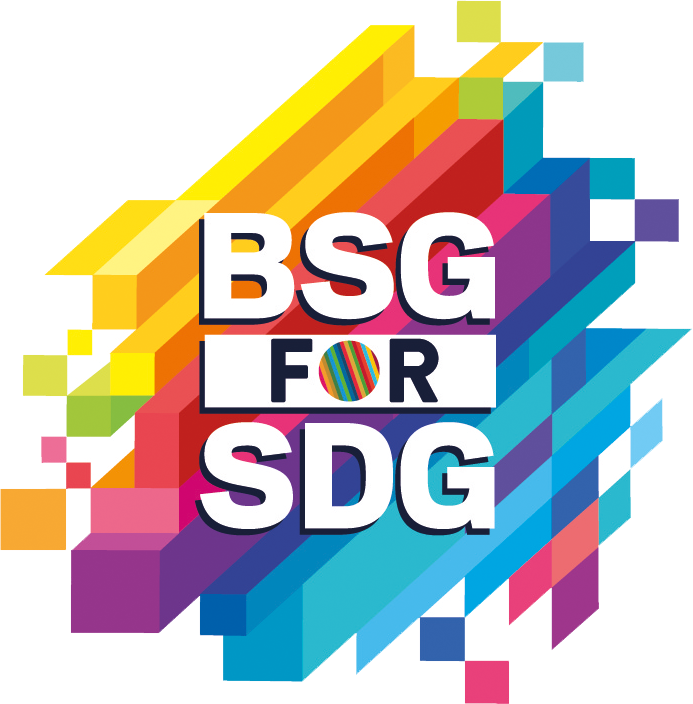
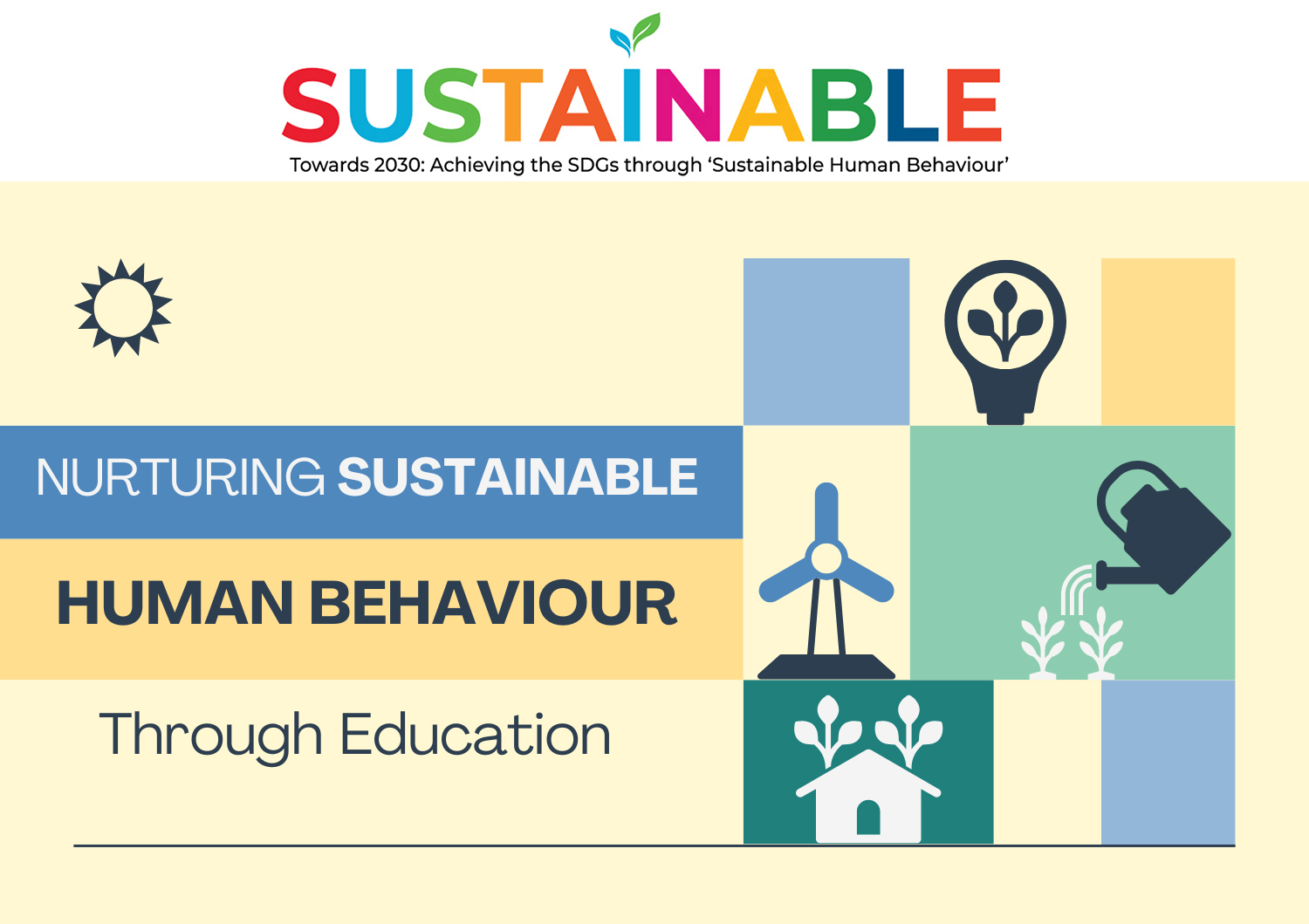
Greetings from BSG Chairperson Mr. Vishesh Gupta

Dear Readers,
Each month, we gather here with a simple intention: to notice the world not only as it is, but as it could be. November, with its instinct for reflection, can pull us toward the weight of a year almost behind us. But I’d still like to think about “What will we choose to transform, even now?”
This moment in history holds something unprecedented. Currently, 1.2 billion young people (aged 15-24) make up 16% of the world’s population. By 2030, the deadline for the UN’s Sustainable Development Goals (SDGs), this group is projected to expand by 7%, reaching almost 1.3 billion. The young population is a force so vast that it could redefine the planet’s trajectory. Numbers, however, never tell the full story. What makes this generation remarkable is not only its size, but its self-invented courage.
In Kenya, materials engineer Nzambi Matee transforms plastic waste into bricks strong enough to build schools. In Peru, Indigenous youth use drones to protect the Amazon. Through GOI’s Mission LiFE, over 20 million Indians – a significant share of them being youth – have pledged to shift towards everyday eco-conscious habits.
The air, the heat, and the uncertainty that shadows their futures – the climate crisis is deep and personal for young individuals. Hence, their ideas, their experiments, their imperfect and hopeful attempts must become the story.
In our previous issue, we explored how education can nurture sustainable human behaviour. This month, we will extend that thread. With this issue, we continue our effort to place young voices at the centre of transformation, not at the margins of decision-making.
Their imaginations are fresh. Their empathy is fierce. And their pursuit of justice refuses delay. The older generations must take their place as trusted allies. Making way for the youth, listening deeply, and following their lead.
In trusting young people with the work of change, the future might just surprise us – again and again.
Warm Regards
Vishesh Gupta
Chairperson, Bharat Soka Gakkai
Young people today are the first ‘Climate Native’ generation. They are natives of a world where heatwaves close schools, clean air is a privilege, and “extreme weather” is a weekly headline. The climate crisis is a lived reality that they navigate every single day. Because of this, they demonstrate a kind of intelligence that is new and worth noticing. They hold an instinctive sense of urgency, adaptability, and boldness about what must change.
Their response, though, is not guided by fear alone. The rise of young individuals determined to repair the damage is gradually shifting the culture and behaviours we live with. Swapping and repairing instead of discarding, choosing local over convenience, speaking up even when the world tells them they’re too young. These aren’t small gestures. This is a revolution of its own that will save the planet.
To understand what fuels this generation – what keeps them hopeful, grounded, and in motion despite the uncertainty – we invited young voices from BSG’s youth membership to reflect on one powerful question:
“As you navigate the realities of climate change, how do you stay hopeful and make sustainable choices while still enjoying the convenience of modern life?”
Their reflections offer a glimpse into the values guiding the next chapter of climate action.

Saachi Bhasin, 18 | B.Tech in Bioinformatics, Amity University
“I’ve become more mindful online — reducing impulsive scrolling and limiting digital clutter and shopping. I’ve realised sustainability doesn’t mean rejecting convenience; it means choosing convenience that doesn’t harm the planet.”
Daksayani Chandra, 20 | BA Political Science Hons, Jesus and Mary College, University of Delhi
“In my daily life, I balance convenience with mindfulness by avoiding single-use plastics and practising mindful consumption through repairing, reusing, and recycling rather than replacing. I have also worked to ensure my neighbourhood participates in plastic waste recycling with an NGO, and have been part of initiatives like the BSG 25 Tonne Plastic Campaign”


Debashish Bindra, 27 | Self-Employed (Artist)
“Sustainability to me means choosing depth over width, quality over quantity, awareness over convenience. Personally, I have chosen to become 100% vegan. Studies show that shifting to a plant-based diet can reduce individual carbon footprints by up to 73%, and free vast tracts of land currently used for livestock.”
Suhani Bhasin, 18| B.Tech Bioinformatics, Amity University, Rajasthan.
“Modern life and sustainability can absolutely go hand in hand. Technology — from ride-sharing and energy tracking to platforms that encourage reuse — makes greener choices easier than ever. What really keeps me motivated is the community around me: friends sharing tips, college groups taking action, and online spaces full of ideas. Sustainability isn’t about perfection. It’s about progress, small wins, and believing that our generation can build a future where convenience and a healthy planet thrive together.”


Oindrika Sur, 27| Marketing Scientist
“As a woman, I realised that menstrual products are a significant source of non-biodegradable waste. To address this, I made a conscious and environmentally friendly switch to period pants, which are reusable and sustainable. These small steps not only reduce waste but also serve as reminders that mindful choices can create ripple effects of change.”
Sharba Das, 19 |Electrical Engineering, Jadavpur University
“Every thoughtful choice matters: reusing, reducing waste, supporting green initiatives, or simply pausing to marvel at a tree swaying in the wind. Each action is a quiet statement of care, a small harmony with the life around us.”


Sagnik Das, 32 | HSBC, Fraud Analyst
“Although I cannot claim to adhere strictly to all recommended practices, I possess a certain level of awareness regarding nature and the conscious choices I make daily. For instance, I save water while showering and washing my face, conserve electricity, and carry reusable bags instead of discarding plastic materials to the best of my ability. Additionally, I strive to adopt a minimalist lifestyle, which encourages reduced consumption.”
Kanav Gupta, 34 | Entrepreneur, Edutech, Education Sector
“Ultimately, the journey towards sustainability begins in the heart. When we conquer the inner division that says “this is mine” and “that is not mine,” we start to live as one with nature. By transforming greed into gratitude and consumption into compassion, we bring hope — not just for ourselves, but for all life on Earth.”

We brought together four young changemakers from BSG — Manek Ratra from the world of EV mobility, Poorvi Mehrotra guiding youth on climate action, Subrata Rath shaping climate finance at National Council for Applied Economics Research, and Aashrika Ahuja, a corporate legal lead at a major private bank — for an honest, hopeful conversation.
Earth represents my personality best as being pragmatic; I’ve always had a grounded and logical approach to things. Working towards stability has always come naturally to me, whether in my personal life or career. The other aspect is reliability, being that good friend in need always, someone everyone can trust and rely on. I am associated with a business that deals with the installation of electric vehicle charging stations, which plays a key role in the adoption of EVs throughout the country.


I am currently based in Bengaluru. I work in the social development sector with young people on climate change. I relate my personality most with Earth and Water, as I feel I am passionate and intuitive about the things I do, but at the same time, practical for a lot of things in my life, and that makes me keep loving the work that I do.
I work as a climate finance consultant in the National Council for Applied Economics Research in New Delhi. I have a background in Environmental Science and have been working in and around this sector for six years. My work involves policy and data analysis with some modelling. I connect with the element of water the most. Like water, I tend to adapt to the vessel I am placed in. Also, like water, I tend to be calm or prefer calm over chaos. It’s the emotional depth that helps me resonate with the water element the most.


I am a lawyer by profession, and I lead the Corporate Legal Team of one of the leading private banks in India.
I feel my personality best represents the element of water, as water is associated with life, growth, nourishment and survival. I believe these are important attributes of my personality because of my ability to find a way and stimulate growth and survival in any situation. Water can purify and plays an important role in cleansing, and that’s the kind of person I aspire to be by revealing my highest potential. Freely flowing water takes shape and adapts to all environments, be it running through a small stream or part of an ocean or a raging waterfall.
I enjoy beaches and dense forests the most, as it helps me reflect on the depth of life and how beautifully all forms of nature and ecosystems co-exist; just how we as human beings should as well.


Since my teenage years, I have maintained a constant and steady practice of walking for an hour every day in natural surroundings like a park or pathways surrounded by trees and plants.
This practice each day refreshes my spirit and helps me feel connected to nature, as during this hour, I do not do any other activity like using a mobile phone, etc. I get time to breathe fresh air, reflect on my day, my dreams, goals and things that I could have done better or can do better
Conserving energy is one sustainable practice that has become second nature for me for quite a long time now, whether it is switching off lights and appliances when not in use or switching the car off during red lights. Additionally, switching to electric vehicles also since it is also part of my business.


On a personal level, I tend to minimise the use of resources. Even if it’s readily available, for example, water, I make sure I use it judiciously. Small practices such as leaving the television not on standby when its not in use, or turning off the running water tap while brushing your teeth, minimizing the use of bulbs/tube light during the day by allowing sunlight to light up the room or segregating waste (wet/dry) and not dumping the recyclable waste in daily garbage which mostly goes to landfill. Travelling in Delhi, especially during summer, can be tough, and I always carry a water bottle with me to make sure I don’t buy another single-use plastic bottle. Additionally, despite having a car, I travel by metro for my daily office commute. This could be a very small but significant step from my end to ease the burden on a city that has already reached its carrying capacity.
I am really fond of renewable energy (RE). India is on the rising trend of RE technology with solar, wind and hydro dominating, and green hydrogen will soon make fossil fuels obsolete. Amongst these, I am really fascinated with the progress we have made through solar energy. It is the base of all the other RE sources. We have been using solar appliances for decades (watches, calculators, etc.), but powering households through solar is still at a nascent stage. Government schemes such as “Suryaghar Yojana” have enabled many to step forward in clean energy in households as well. In the future, I see a bright future where people will be more conscious of clean energy, and it will also be more accessible to the public. I foresee villages that lie off-grid or that do not have access to amenities would be able to connect to the world due to access to this clean energy, and it also becomes affordable to all.

Today, the word sustainability has been widely used in all sectors. Be it green buildings, green financing/ accounting, green budgeting, ESG in corporations etc. A green career does not have to be directly involved in the environment or sustainability. To me, these are jargon and sometimes fail to fulfil what they were originally intended to do. In an urban setting, every job or role an individual does can, in one way or another, be a green job. A green job for me could be a person picking up waste regularly, or the regulatory bodies that ensure there are no garbage spots in the city. Working as a technician for an electrical company could also be a green job, as they make sure there is an uninterrupted supply of energy. A green career integrates innovation, responsibility, and long-term thinking to address challenges like climate change, resource depletion and clean energy transitions.

I would love to see collaborations between youth and businesses, schools or local governments happen very organically instead of something being made a mandate with external push.
There has to be a growing consciousness that, without collaborating with youth and the current generation, the pace of progress and the impact, as well as the change one wishes to bring, will be slow and negligible at best.
I suggest induction of a team of representatives from youth in each business organisation/company, school or local government for planning, executing and successful implementation of plans, policies and all creative endeavours any organisation attempts. Participation of youthful volunteers in projects undertaken by local governments, such as the implementation of state laws concerning education, digital media, AI, etc. The implementation and execution, as well as the impact of any new policy/plan/project, will be much more effective with participation from the current generation and help foster/ train future leaders in a lot of fields in the country. Practical participation will stimulate growth in youthful leadership at a faster pace.

To be a compassionate leader, an important quality is to be solution-oriented rather than being a person who is always focused on the magnitude of the problem and the impossibilities in front. With human resilience, creativity and solidarity towards common goals, one can find a way out of any seemingly impossible situation. This spirit, even if reflected in one individual among a group of people, can light a ray of hope and courage in many others and pull them out of the mindset of hopelessness.

As a youth and someone who works with young people on an everyday basis, I am amazed at the resilience with which we deal with things. The youth climate leaders that I work with on many instances have held the decision makers in their local community accountable for the responsibilities that were theirs. In order to make their communities and areas better with cleaner water and sanitation, they have been working with locals to get the borewell functional, well rejuvenation is taking place and the black spots are getting cleared; so that each and every person, especially the people from vulnerable communities also receive the right to decent life; seeing these actions from young people motivate me everyday.

‘An Inconvenient Truth’ by Al Gore was the first documentary I watched years back that was like a wake-up call on how real climate change is, and how urgently everyone needs to get together and act. Since its release, climate change has been more evident in what has been happening around the world. Even though it was released years ago, everyone should watch it once. Over the years, awareness has improved throughout the world, but it is still not up to the level it should be.

Towards 2030, I aim to build a world that is fair and just for all, and the impact of urbanisation and mental health challenges that are ever prevalent now needs to be made an inclusive world. I am taking steps by working at the ground level to understand the reality and the challenges people face, especially the marginalised communities, in being heard and their voices being heard at decision-making platforms.


I would try my best to reduce inequality around me. A key aspect of the 2030 goals is to end poverty and hunger everywhere. With the current rate of growth, by 2030 India could be the third-largest economy in the world, but poverty and inequality would still be quite high in the country. Right now, I am working in a think tank that is working to provide suggestions and solutions to the clean energy inequality in the country (especially in the remote regions) directly to the government. Larger goals require a collective effort of both the private and public sectors. I personally feel energy transition and poverty eradication should go hand in hand, and by 2030, we could see a better and equitable society.
Towards 2030, I will do my bit in expanding BSG’s SDG clubs, taking the education of Seeds of Hope & Action (SOHA) exhibition to diverse fields, companies and organisations in all areas of society. I also envision sustainable human behaviour taking steady steps towards becoming a worldwide phenomenon naturally and, as a by-product, a norm of all human affairs.


As a part of my business, currently working towards having cleaner air towards promoting the uptake of electric mobility in the country, especially towards shifting all commercial vehicles to electric, as they account for most of the pollution and carbon emissions. We aim to set up a high number of EV Charging stations for the same through our partnerships, encouraging traditional logistics companies and commercial vehicle operators to shift to electric.
Young people are finding their own ways to express their hopes and concerns. Here are some words being used by Gen Z to talk about environmental issues:
- Youthquake – when young people drive major social change.
- Greenwashed – sustainability claims that are only surface-level
- Thrift Drip – Stylish second-hand fashion
- Plant-Parent Era – Caring for houseplants like family
- Eco-Gaslighting- When institutions or brands try to escape environmental and social responsibility.
- Climate Grief / Eco-Anxiety – Emotional distress over environmental decline
- Doomscrolling the Climate – anxiously consuming endless climate news
Around the world, young people are inheriting a century that has already tested the limits of our planet and our humanity. Yet rather than falling into resignation, they continue to shoulder responsibilities that previous generations could not complete. In his 2017 Peace Proposal to the UN, SGI Founding President Daisaku Ikeda emphasises that this courage is not a miracle possessed by a select few; it is a human capability that awakens when youth decide to confront reality directly. As he writes:
“Our capacity to overcome difficulties is unleashed as we turn anguish and concern into determination and action.”
Modern research calls this collective efficacy. It is the belief that coordinated human effort changes outcomes. Youth movements for climate justice, gender equity, and peace are founded on this psychological transformation: anxiety becomes motivation, and motivation becomes solidarity. Unlike fear, which isolates, shared responsibility unites.
President Ikeda notes: “Young people in particular are blessed with a fresh sensitivity and a passionate seeking for ideals. Their energy can catalyse chain reactions of positive change as they forge bonds of trust among people.” Sociology confirms this: youth are the life stage most open to revising norms they inherit. They are not constrained by ‘this is just how the world works.” They ask: Why must it?
But ideals alone are not enough. The way youth act is revolutionary. Climate anxiety, inequality, and injustice may initially feel paralysing, but when young people choose solidarity over despair, these same emotions turn into the fuel for courageous activism. And the most powerful vehicle for this change is not policy or technology, but friendship.
President Ikeda writes: “The world is not simply a collection of states, nor is it composed solely of religions and civilisations. Our living, breathing world is woven of the endeavours of countless human beings who may share particular backgrounds but no two of whom are the same.” Further, President Ikeda says, “The magnetic field of friendship can enable the functioning of an inner compass when we have lost our sense of direction and help us right society when it seems to be veering off course.”
Youth-led networks show that belonging can stretch across borders, castes, religions, and identities. President Ikeda writes with conviction: “A rising tide of friendship within the younger generation cannot fail to transform society.” This is why youth-led connections – campus to campus, city to village, nation to nation – matter far beyond nice sentiments. They are a solid infrastructure for peace.
President Ikeda speaks with special admiration about young people who turn hardship into service. He shares a striking example from Japan:
In 2015, youth members of Soka Gakkai Japan initiated the “SOKA Global Action” peace campaign, supporting communities affected by the 2011 earthquake and tsunami, while also strengthening cross-border friendship in Asia and championing the abolition of nuclear weapons.
They responded to human suffering with practical care – cleaning debris, listening and responding to survivors. Their compassion became momentum.
In Transforming our world: the 2030 Agenda for Sustainable Development, the General Assembly Resolution that sets out the SDGs, young people are identified as “critical agents of change.” President Ikeda echoes this truth:
“Today’s youth are the generation that will most powerfully shape the work of achieving the SDGs.”
For youth, “leaving no one behind” is and should be a daily ethical choice: Who gets clean water? Who is invited to speak? Who feels safe? Seeing life not merely as something to optimise for oneself but as a shared space to protect for all.
President Ikeda writes: “When youth make the determination to illuminate the corner of the world they inhabit now, it brings into being a space of security in which people can regain hope and the power to live. The determination to live together that is ignited in this space of security shines as an embodiment of the global society in which no one is left behind, inspiring courage in people living in other communities who confront similar challenges.”
The needs of youth are urgent, and their voices are indispensable. Youth are the protagonists of this moment. Their leadership can turn hope into action, here and now.
This month, the Empower section spotlights the work of our SDG Clubs. These are spaces where young people are already practising the courage, creativity, and responsibility we celebrate in this issue.

Breaking Gender Bias in STEM – Tashi Namghyal Academy, Gangtok
The SDG Club at Tashi Namgyal Academy, Gangtok, moved beyond surface-level discussion to explore how gender discrimination can show up quietly in different spaces. Through guided group exercises, students reflected on everyday situations – in classrooms, homes, playgrounds, and workplaces – and identified the subtle ways expectations, opportunities, or encouragement can differ for boys and girls.
These insights were shared through thoughtful, research-backed paper presentations, prompting teachers and younger students to reflect on their own assumptions. What may appear like a simple classroom exercise became, for many participants, the first step in recognising bias, naming it, and deciding how to dismantle it. The activity helped them build a deeper, shared understanding of how equality must be practiced consciously.
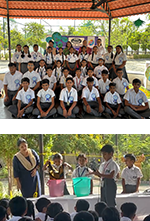
‘Wrinkles Achche Hai’ – Gujarat Public School, Waghodia
At Gujarat Public School, Waghodia, the SDG Club turned a simple Earth Day activity into a lesson in mindful living. Junior students demonstrated how simple, everyday habits – washing uniforms in buckets, line-drying clothes, and using the “pillow press” instead of an iron – can significantly reduce energy and water use. Their peer-to-peer approach made sustainability feel accessible, rooted in practices any student could adopt without special resources.
Adding another layer of meaning, the Club’s Energy Audit Team shared findings from a student-led review of the school’s electricity consumption. By connecting small daily actions with measurable patterns of energy use, they helped their school see sustainability as a system shaped by many hands. In doing so, the students showed that behavioural change is possible and even contagious when modelled honestly and creatively.
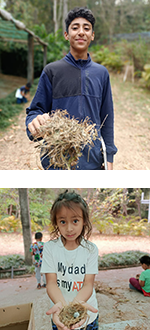
Home for Feathered Friends – Himalayan Trust for Natural History Art, Kalimpong
At the Himalayan Trust for Natural History Art, Kalimpong, the SDG Club chose to look at their city through the eyes of its smallest residents. Students designed and built bird nests to support local species that often struggle to find safe shelter in fast-changing urban landscapes. The activity proved to be a great lesson on coexistence.
By observing bird behaviour, selecting safe installation sites, and learning about species common to their region, the students grounded their creativity in ecological understanding. Their tiny homes became symbols of a larger urban ethic: that true sustainability protects the delicate threads of biodiversity that make a city feel alive.
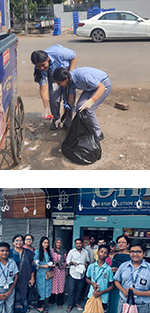
Plastic-Free, Together
This SDG Club of Moti Ram Arya Modern Public School, Panchkula, went beyond the classroom and straight into the heart of their community. With gloves on and spirits high, they carried out a local cleanliness drive, collecting piles of plastic waste that would’ve otherwise choked drains and neighbourhood greens. But they didn’t stop there. Knowing that change sticks only when communities have alternatives, the club returned with bright, reusable cloth bags — gifted to shopkeepers, families, and street vendors in nearby markets. Every bag handed out was a friendly invitation to ditch disposables and choose a cleaner future. In this blend of action and outreach, the students demonstrated that sustainability grows strongest when it is shared, and made local.
 SDG Tip for Daily Life
SDG Tip for Daily Life
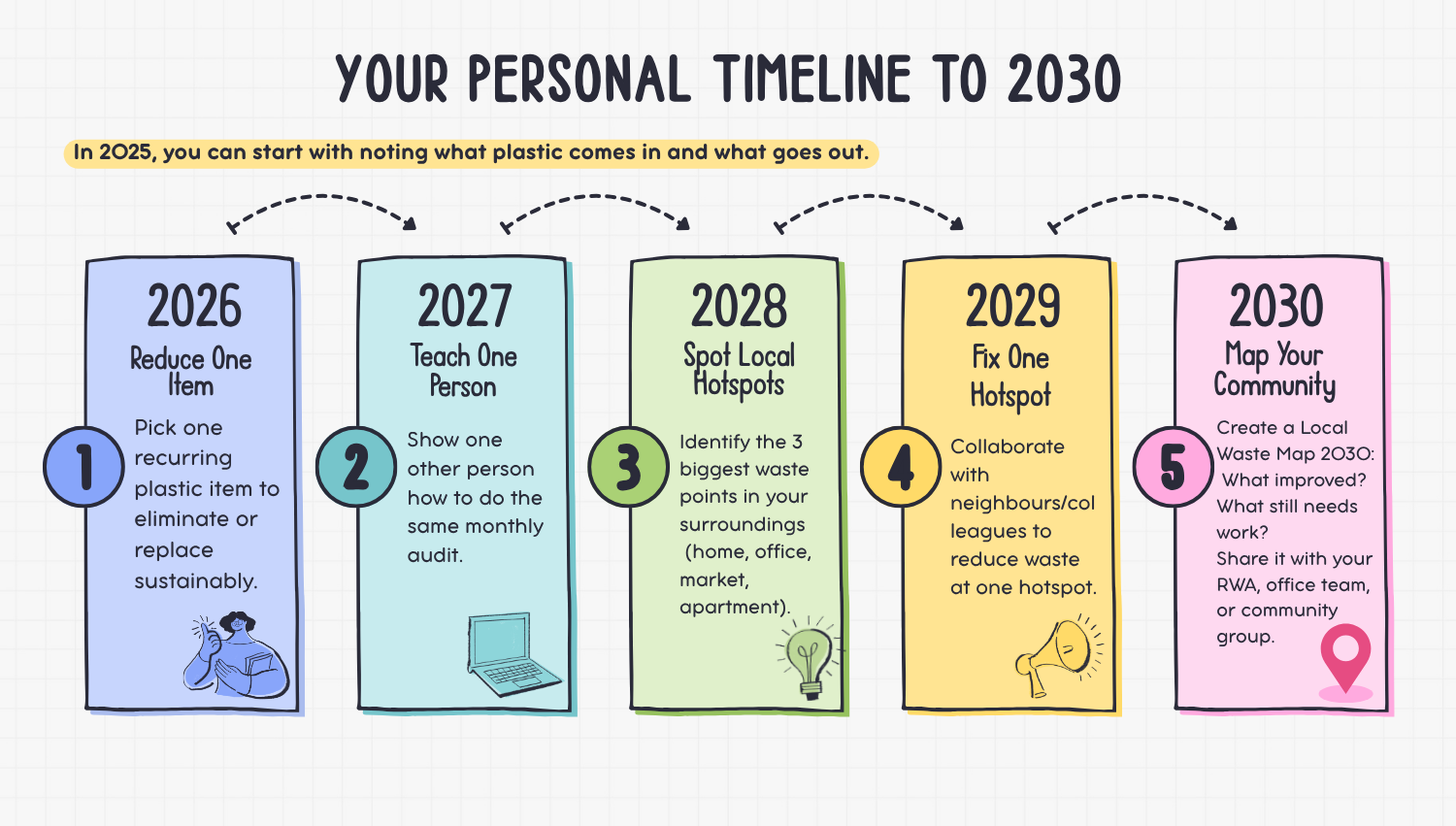
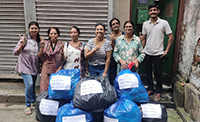
Updates
BSG conducts 3rd annual plastic collection drive in Kolkata
BSG organized its 3rd annual Plastic Collection Drive as part of its ongoing “Say No to Plastic” campaign in Kolkata this year. The drive kick-started with full vigour through a launch event held on October 6, 2024, where over 2200+ BSG members and guests came together to take a stand for a cleaner, sustainable future.
Read more
BSG hosts ‘Self-Organised Dialogue’ on the Global Ethical Stocktake (COP30)
As part of the Global Ethical Stocktake initiative, on 24th September 2025 BSG facilitated a vibrant discussion with students from across India – representing 22 schools and colleges, including 11 BSG SDG Clubs, along with faculty members. This was also featured at the “Global Ethical Stocktake Pavilion” during COP30 in Brazil.
Read more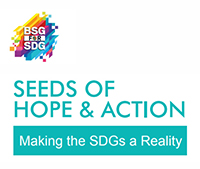
BSG has now Successfully Held 257 SOHA Exhibitions
The ‘Seeds of Hope and Action (SOHA): Making the SDGs a Reality’ exhibition has travelled to 210 destinations across the country, including: Chandigarh, Amritsar, Jaipur, Delhi, Karaikal, Gangtok, Kalimpong and Hurda, Rajasthan.
Read more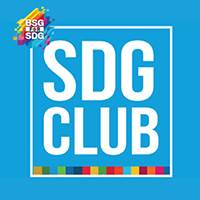
BSG forms the 37th, 38th, and 39th SDG Clubs
As part of its mission to foster young SDG ambassadors in Indian schools and colleges, BSG established the 37th, 38th, and 39th SDG Club in CSI College of Engineering, Coimbatore, KalaignarKarunanidhi Institute Of Technology (KIT), Coimbatore and Krea University, Andhra Pradesh
Read moreContact Us
 Any queries or suggestions regarding the newsletter can be addressed to sdg@bharatsokagakkai.org
Any queries or suggestions regarding the newsletter can be addressed to sdg@bharatsokagakkai.org
 To know more about the ‘BSG for SDG’ initiative, visit the BSG for SDG website
To know more about the ‘BSG for SDG’ initiative, visit the BSG for SDG website
 Download the ‘BSG for SDG’ mobile app with the carbon footprint calculator
Download the ‘BSG for SDG’ mobile app with the carbon footprint calculator
